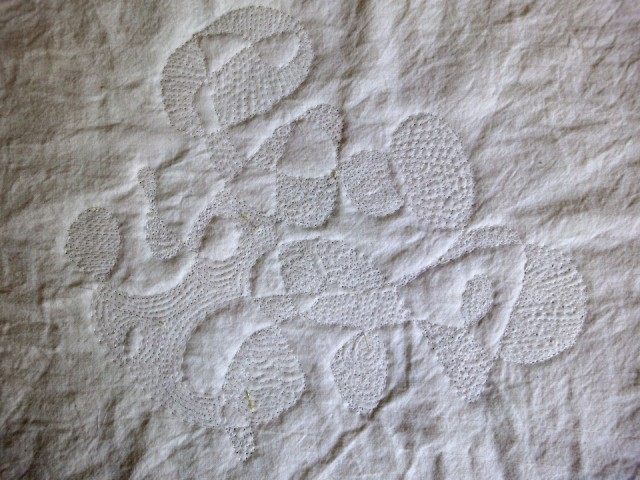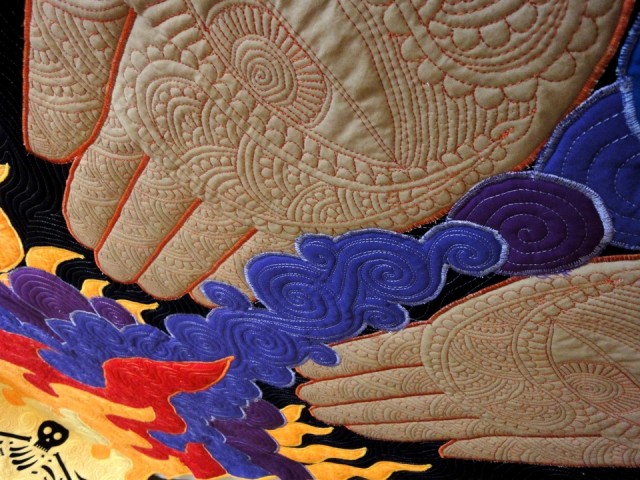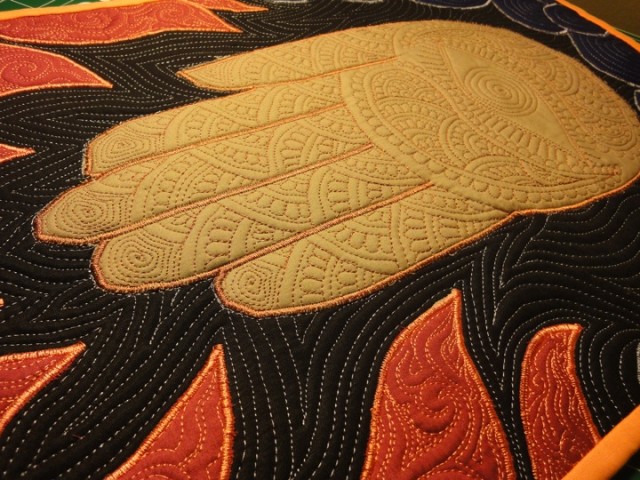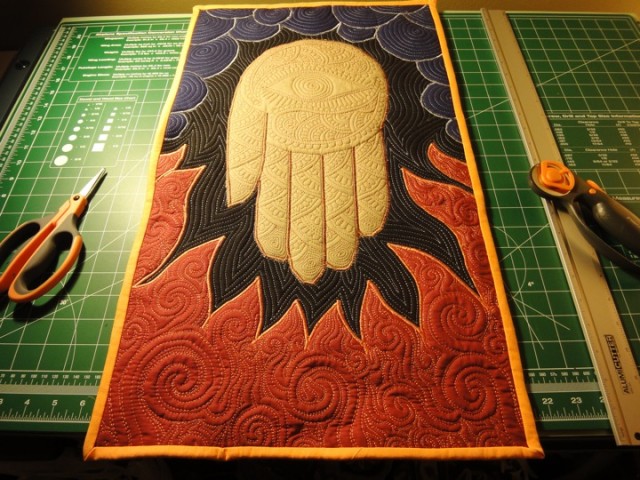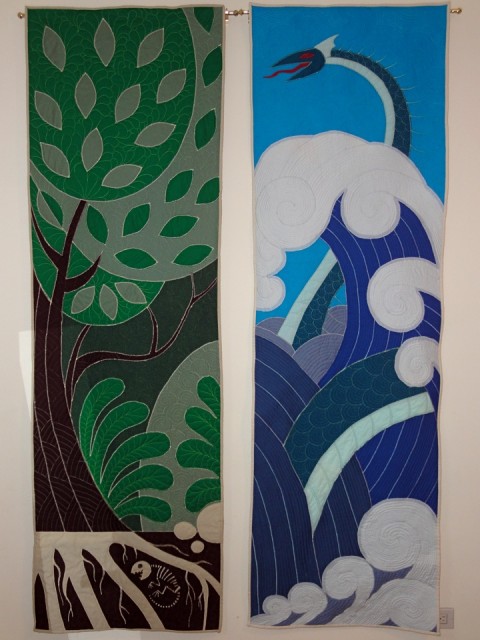My obsessive desire to create sewn tapestries is butting up against the incredible amount of work required to do so. Most of that work is non-expressive; it is carrying out orders dictated by the design; it is execution; it is craft. I may be discovering, for myself, where the boundary between Art and Craft lies. All Art has elements of Craft; all Craft contains elements of Art. But Craft, in its purest abstract conceptual form, is pure work; Art is pure emotional force, perhaps idea. You can’t have one without the other, but the proportions vary widely.
I want to be spontaneous and expressive. Quilting is sort of like those dreams where you try running through molasses. It. Is. So. Slow. I have much patience for art, but quilting is so slow my expressive force peters out before it reaches expression. It’s what writing would be like if writing consisted of carving the letter punch, punching the letter form, setting the movable type, and pressing the press. By the time I did all that, I’d have forgotten what it was I wanted to say in the first place.
Can I sew expressively? I hope so. Here are a few experiments.
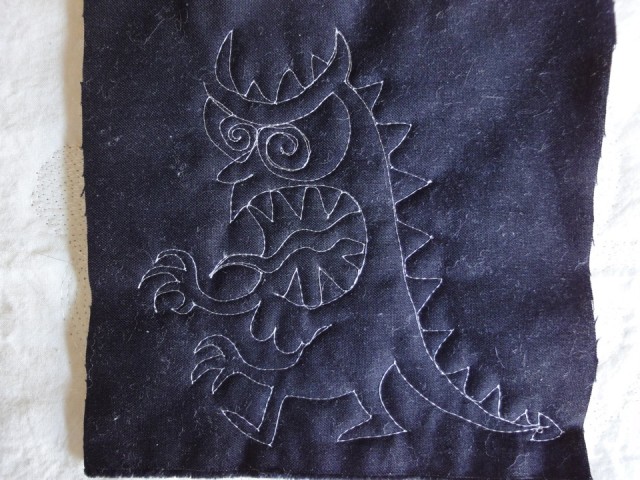 Neenzilla, 5″ x 5″. I did this really fast, while showing some friends how to free motion quilt. I like it a lot. But it’s just a sketch; it doesn’t feel like a “real” piece to me. It lacks sufficient Craft.
Neenzilla, 5″ x 5″. I did this really fast, while showing some friends how to free motion quilt. I like it a lot. But it’s just a sketch; it doesn’t feel like a “real” piece to me. It lacks sufficient Craft.
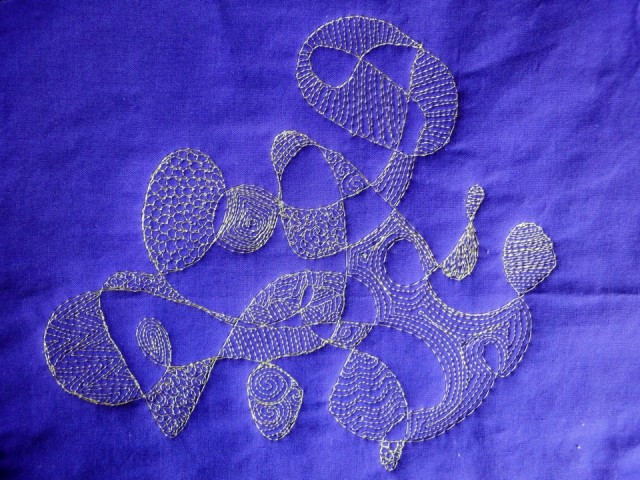 Blind Stitch, about 10″ x 10″. In an attempt to free myself up, I stitched the outline of this with my eyes (mostly) closed! I’d do more of that but I’m afraid of accidentally sewing through my own fingers. I filled in every other space tightly with more thread, in the usual labor-intensive eyes-open free-motion quilting way. So it attempts to balance expressive freedom and labor, except expressing myself with my eyes closed doesn’t really satisfy me. I prefer to say something, intentionally.
Blind Stitch, about 10″ x 10″. In an attempt to free myself up, I stitched the outline of this with my eyes (mostly) closed! I’d do more of that but I’m afraid of accidentally sewing through my own fingers. I filled in every other space tightly with more thread, in the usual labor-intensive eyes-open free-motion quilting way. So it attempts to balance expressive freedom and labor, except expressing myself with my eyes closed doesn’t really satisfy me. I prefer to say something, intentionally.

